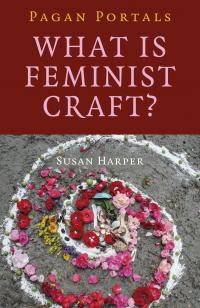
 February in the Wheel of the Year Part 1: Imbolc and Candlemas - By Lucya Starza
February in the Wheel of the Year Part 1: Imbolc and Candlemas - By Lucya Starza
February’s a short month, but sees a lot of change in the natural world in southern England, where I live. At the start of the month a few early flowers are blooming in my garden, including snowdrops, which I look forward to seeing but I don’t bring indoors as that’s considered unlucky. By the end of it there’ll be spring flowers everywhere. The festival that starts the month is Imbolc in the Wheel of the Year.
Imbolc
Snowdrops are the flower most associated with the festival in current times. Marking the first stirrings of spring, Imbolc is almost certainly pre-Christian in origin according to Professor Ronald Hutton in The Stations of the Sun, although he points out that literary mentions mostly date back to early medieval Ireland and we don’t know how ancient people celebrated it. The term appears in Tochmarc Emire, a tale in the Ulster Cycle, described as “when the ewes are milked at spring’s beginning”. Professor Hutton writes of Imbolc: “It was placed in the Roman calendar, adopted by the Irish by the time that written records began, on 1 February.”
After a hilltop Imbolc celebration a few years back I wrote in my diary: "Just got back from a druid ritual. Haz hot water bottle to thaw the icicles that are my legs." I’ve always loved taking part in outdoor Wheel of the Year celebrations, but Imbolc is usually the coldest; much colder than Winter Solstice and just as icy as January. Nevertheless, as a pagan, I think it's important to get outside - or at least open the window and look outside - to see what's happening in nature. If all you do each month is spend some time looking outside and noticing what’s bare and what’s blooming, that’s a valid observance of how the Wheel of the Year turns. If you live in the countryside or work in agriculture, you’ll notice those things as a matter of course, but I’m an urban pagan and have to remind myself to look at the trees, plants, and wildlife in the city as well as the manmade bits.
Imbolc can be a time to romantically think back to life in the past, when most people were involved with agriculture, especially the lambing season at this time of year. But as a 21st century urban pagan I like to recognise what's relevant in my modern life. I might not be helping ewes give birth, but I can start working on new projects I want to see the light of day. Personally, I find this time of year is good to get creative with writing, crafting, and anything artistic. They can be done indoors, so ideal for those who don't like getting frozen on a hilltop for too long.
The Goddess Brigid
Many pagans honour the goddess Brigid or Bride at Imbolc, while Catholics honour a Christian saint of the same name, and possibly the same origin. Brigid is a goddess of many talents. She’s associated with smithcraft, poetry (which I see as creativity in general) and healing. She’s also often connected with fire, which can mean light returning to the land, and water including sacred wells and springs. At Imbolc, or Imbolc Eve, it was customary in Ireland to make straw dolls called Bride Dolls, which could be put on display or carried around the area in her honour. Brigid’s crosses were also woven out of rushes or sometimes straw and hung in windows to ask her blessing and protection. These are things you can still make today, and in the picture you can see examples I made.
Candlemas and Candle Magic
On February 2, a day later, is the festival of Candlemas. It was traditionally celebrated by the blessing and lighting of candles for purification. Imbolc rituals can also involve lighting a candle to Brigid and asking for her blessing and perhaps inspiration.
In my book Pagan Portals – Candle Magic there’s a spell for springtime wishes that uses floating candles. It’s intended to help your wishes and dreams come true. You can work the magic alone, with your partner, with a group of friends, or as part of a springtime ritual. What you need is a floating candle for each person, a suitable bowl or cauldron of water and some matches. Everyone should scratch their wish on the bottom of a candle, then light it and float it on the water. When all the candles are lit, chant three times:
Fire and water
Kindle and flow
Bring life to our dreams
And let them grow.
Then enjoy watching the candles burn down in their bowl.
This is part of a series of posts I’m writing for the Moon Books Blog on the theme of the Wheel of the Year. They will be compiled and edited into a book: Pagan Portals – Wheel of the Year. Other books by Lucya Starza in the Pagan Portals series include Candle Magic, Guided Visualisations, Poppets and Magical Dolls, and Scrying. Lucya edited the community book Every Day Magic – A Pagan Book of Days.
Categories:
0 comments on this article






